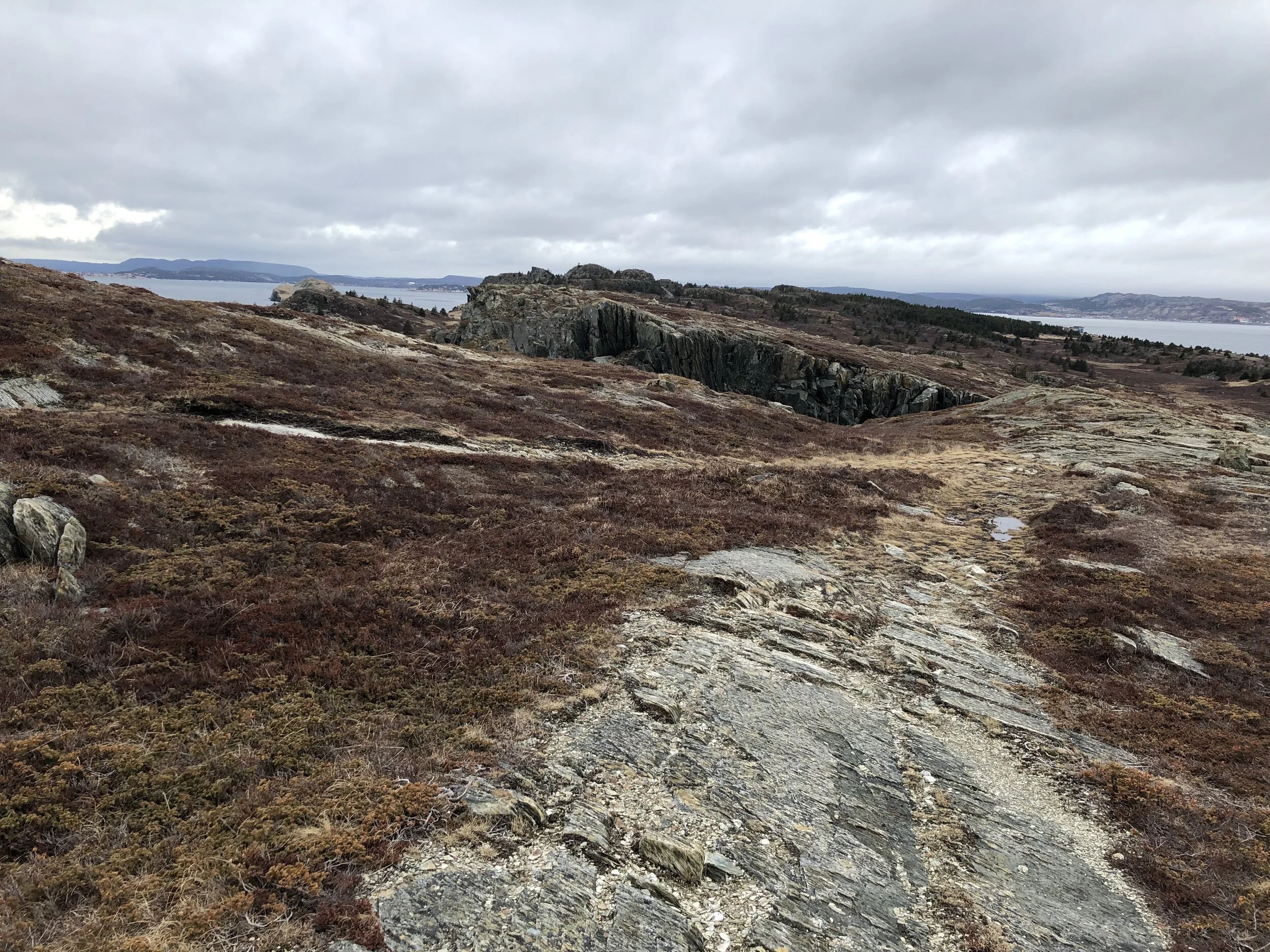Walking around one of my favorite spots in Newfoundland last April
During lockdown, walking is some of the only exercise that many of us get. Time spent outdoors is critical to our mental and physical health if we’re spending most of our days holed up in our homes. Through the last few months, I’ve learned the roads, paths and terrain of our neighbourhood as never before.
Research by neuroscientist Shane O’Mara shows that walking is not only enjoyable, but is part of the hard-wiring of our brain’s imaging system:
Essential brain-nourishing molecules are produced by aerobically demanding activity, too. You’ll get raised levels of brain-derived neurotrophic factor (BDNF) which, writes O’Mara, “could be thought of as a kind of a molecular fertiliser produced within the brain because it supports structural remodelling and growth of synapses after learning … BDNF increases resilience to ageing, and damage caused by trauma or infection.” Then there’s vascular endothelial growth factor (VEGF), which helps to grow the network of blood vessels carrying oxygen and nutrients to brain cells.
On our internal navigation system:
O’Mara describes our inbuilt GPS, or cognitive mapping system, as a silent sense. “It is constructed largely without our awareness, and we only notice it if it fails us.” While the sensitive vestibular system of the inner ear governs balance, for mental mapping (which can work even when our eyes don’t), we have what are known as place cells in our hippocampi. If you stay in one place, the cell for that position keeps firing, but if you move, that cell will stop firing and a cell marking your new position will start firing and so on. In rat experiments, the system worked less well when the rodents were wheeled around as opposed to walking.
It’s clever, but not infallible. “We get fooled when we walk a long way in a single direction,” says O’Mara. We need to keep looking around us and recalibrating with visual cues. “If you’re feeding your place cells by coming from a single direction, what they know about the environment is that single direction and you want them to have input from all directions, so look around occasionally and your place cells will reset from the whole sensorium around you.”
While all this is going on in the background, our social brains are working to predict which direction others will take, to avoid collision. In order to walk and navigate, the brain flickers between regions, just as our waking minds are often, says O’Mara, “flickering between big-picture states – thinking about what we have to do tomorrow, plans for next year, engaging in what is called ‘mental time travel’ – and task-focused work. And you need to flicker between these states in order to do creative work.” That’s how important associations get made, and this flickering seems to be bolstered by walking.
